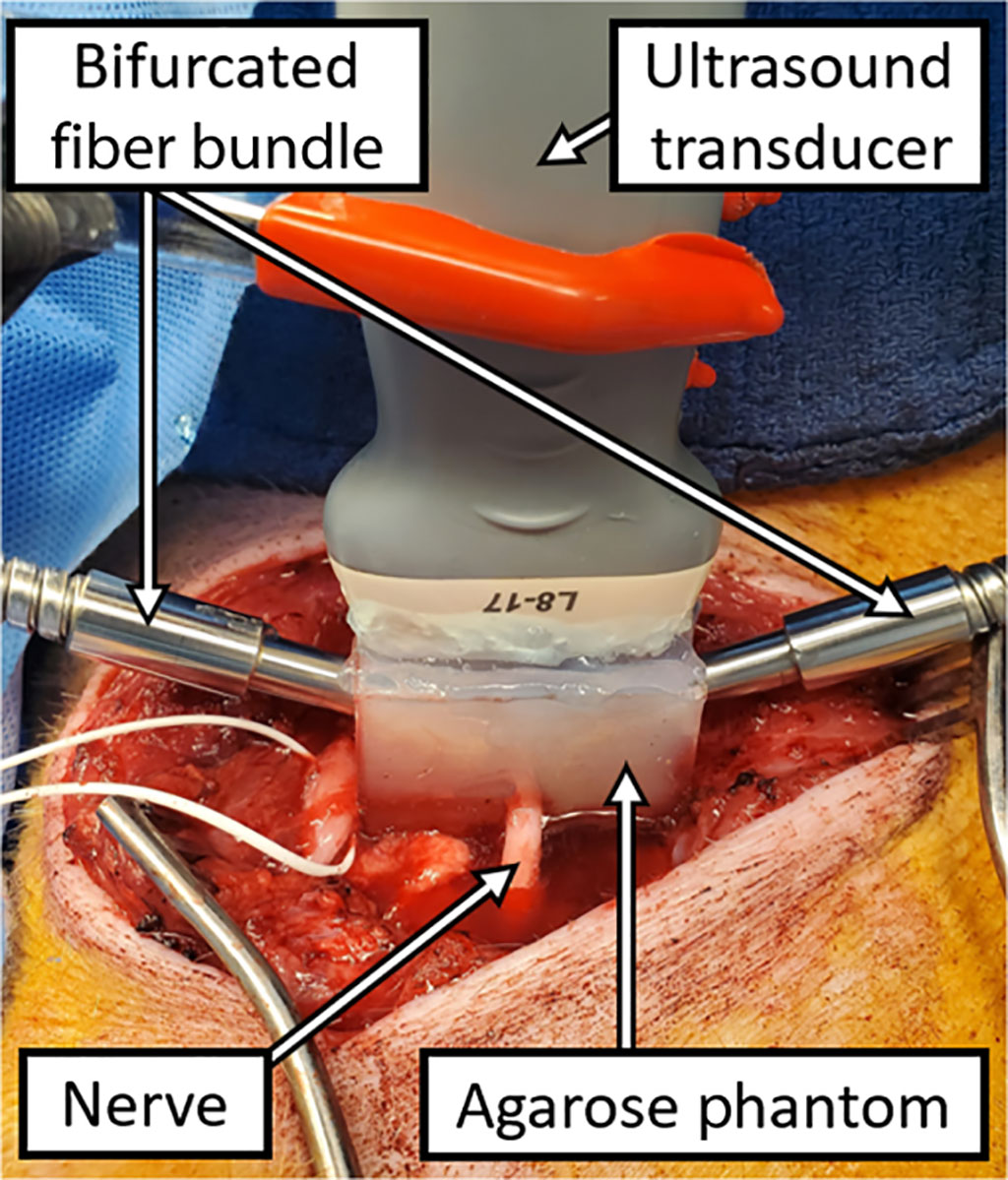Photoacoustic Imaging Creates Detailed Images for Preventing Nerve Damage during Surgery
Posted on 07 Sep 2023
Invasive medical procedures, often involving local anesthesia, carry a risk of nerve injury. Surgeons may inadvertently damage nerves during surgery by cutting, stretching, or compressing them, leading to lasting sensory and motor issues in patients. Similarly, patients receiving nerve blockades or other anesthesia can suffer nerve damage if the needle isn't precisely placed near the targeted peripheral nerve. To mitigate this risk, researchers are working on medical imaging techniques. Ultrasound and magnetic resonance imaging (MRI) can help surgeons locate nerves during a procedure. However, it's challenging to distinguish nerves from surrounding tissue in ultrasound images, and MRI is costly and time-consuming.
A promising alternative approach is multispectral photoacoustic imaging, a noninvasive technique that combines light and sound waves to create detailed body tissue and structure images. It involves illuminating the target area with pulsed light, causing slight heating and tissue expansion. This generates ultrasonic waves detected by an ultrasound detector. A research team from Johns Hopkins University (Baltimore, MD, USA) conducted a study characterizing the absorption and photoacoustic profiles of nerve tissue across the near-infrared (NIR) spectrum. They aimed to identify the ideal wavelengths for nerve tissue visualization in photoacoustic images, focusing on the NIR-III optical window (1630–1850 nm). Nerve myelin sheaths contain lipids with a characteristic absorption peak in this range.

Their experiments on peripheral nerve samples from swine revealed an absorption peak at 1210 nm, falling in the NIR-II range but also present in other lipids. However, when water contribution was subtracted, nerve tissue showed a unique peak at 1725 nm in the NIR-III range. Photoacoustic measurements on live swine's peripheral nerves using custom imaging confirmed that the NIR-III band peak effectively distinguishes lipid-rich nerve tissue from others containing water or lacking lipids. These findings may encourage further exploration of photoacoustic imaging's potential and enhance nerve detection and segmentation techniques in other optical imaging methods.
“Our work is the first to characterize the optical absorbance spectra of fresh swine nerve samples using a wide spectrum of wavelengths, as well as the first to demonstrate in-vivo visualization of healthy and regenerated swine nerves with multispectral photoacoustic imaging in the NIR-III window,” said Dr. Muyinatu A. Lediju Bell who led the research team. “Our results highlight the clinical promise of multispectral photoacoustic imaging as an intraoperative technique for determining the presence of myelinated nerves or preventing nerve injury during medical interventions, with possible implications for other optics-based technologies. Our contributions thus successfully establish a new scientific foundation for the biomedical optics community.”
Related Links:
Johns Hopkins University














